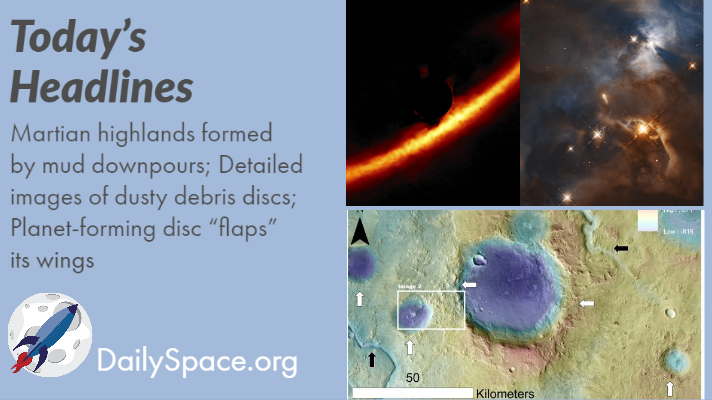
Jun 26, 2020 | Daily Space, ESA, Exoplanets, Gemini South, Mars, Star Forming Region
Join us today as we look at a possible explanation for how mudstone formed in the Martian highlands. We share a plethora of new images from the Gemini Planet Imager of detailed, dusty discs around stars. And finally, Hubble sees another planet-forming disc flap its bat-wings.
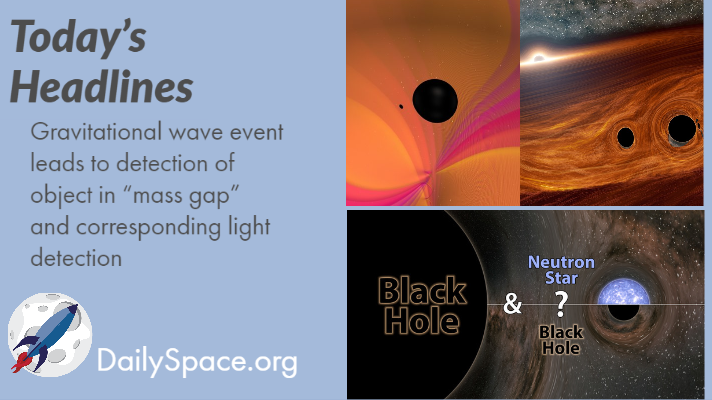
Jun 25, 2020 | Daily Space, Neutron Stars / Pulsars, Supermassive Black Holes
For today, both stories are related to the detection of gravitational wave events and are believed to be caused by the merger of massive objects far off in the universe.
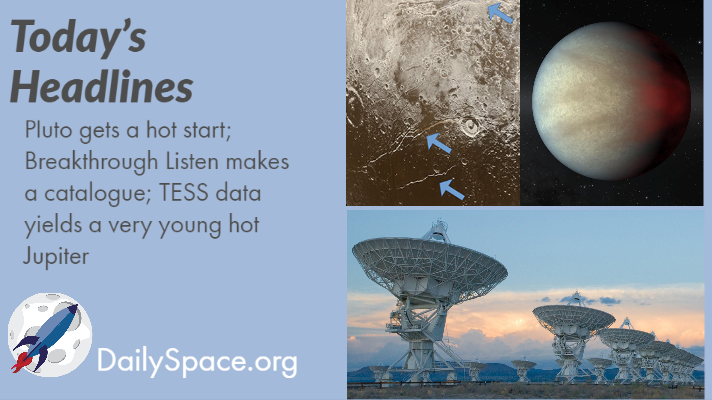
Jun 23, 2020 | Astrobiology, Daily Space, Exoplanets, KBOs, Pluto & Charon
Join us today as we look at New Horizons images of Pluto for evidence of how the planet’s icy ocean formed. We also discuss Breakthrough Listen’s announcement of a new catalogue of “exotic” targets. And finally, we share the news that a very young hot Jupiter close to its star was found in TESS data.
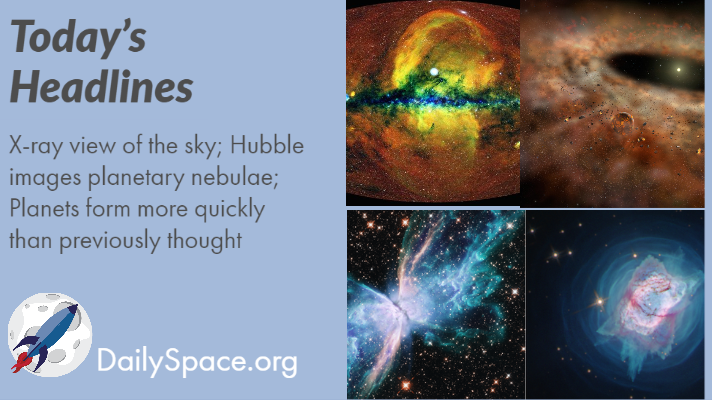
Jun 19, 2020 | Daily Space, ESA, Exoplanets, Galaxies, Milky Way, Planetary Nebulae
Join us today as we take a look at an amazing all-sky view done in x-ray wavelengths. We also get to see gorgeous images Hubble took of planetary nebulae that show wild processes going on. And finally, we learn that planets form much more quickly than previously thought.
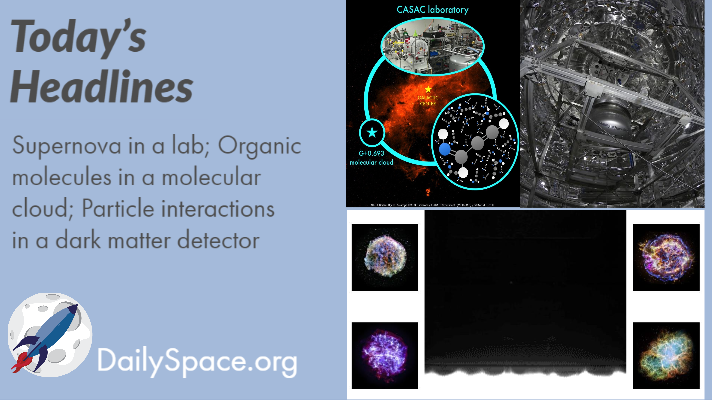
Jun 18, 2020 | Astrobiology, Cosmology, Daily Space, Dark Matter, Supernovae
Join us today while we take a look at a laboratory recreation of a supernova. We’ll also talk about the discovery of another amino acid precursor molecule in an interstellar cloud. Finally, we call attention to news that a dark matter detector has possibly seen some weird particle interactions and what that could mean.
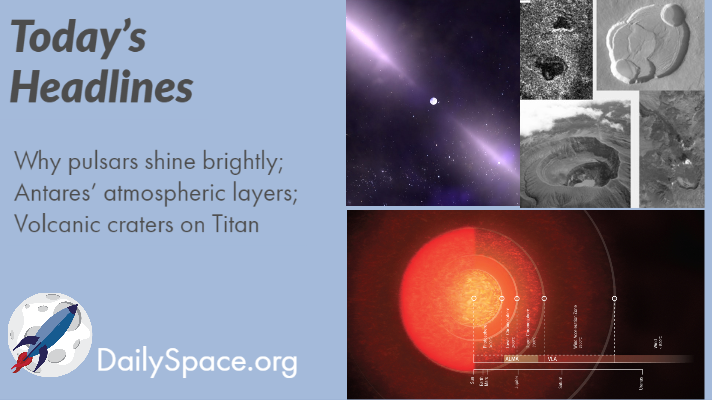
Jun 16, 2020 | Cassini, Daily Space, Neutron Stars / Pulsars, Stars, Titan, Very Large Array
Join us today as we consider a new paper on why pulsars shine so brightly (hint: it’s those pesky magnetic fields). We take a look at new images of Antares’ massive atmospheric layers. Finally, we share a story from our own Planetary Science Institute: evidence has been found that there are volcanic craters on Saturn’s moon, Titan.








 We record most shows live, on Twitch. Follow us today to get alerts when we go live.
We record most shows live, on Twitch. Follow us today to get alerts when we go live.